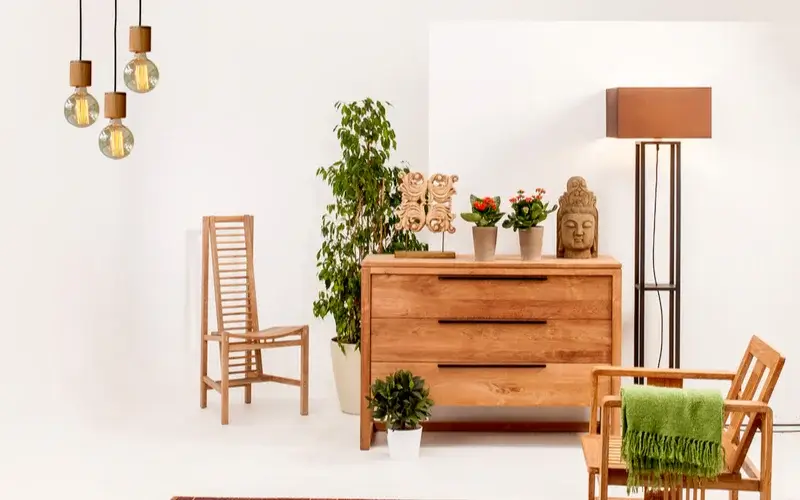In a world where technology is seamlessly woven into every aspect of life, the rise of smart furniture is transforming how we live, work, and relax at home. No longer just about aesthetics and comfort, furniture in 2025 is evolving into intelligent, multifunctional systems that enhance convenience, efficiency, and lifestyle.
From beds that monitor your sleep cycles to desks with built-in wireless charging and AI-powered coffee tables, smart furniture is more than just a trend—it’s a functional revolution in home design. Here’s a closer look at how tech-integrated furniture is shaping modern living spaces and what you should consider when upgrading your home.
What Is Smart Furniture?
Smart furniture combines traditional design with modern technology to offer enhanced functionality. These pieces often feature connectivity (Bluetooth or Wi-Fi), automation, sensors, voice control, and even AI to respond to user needs.
Whether it’s a recliner that adjusts to your body shape, a mirror that doubles as a fitness screen, or a dining table with touch controls, smart furniture serves dual purposes—comfort and capability.
The Benefits of Smart Furniture
a. Convenience and Efficiency
Imagine charging your phone just by placing it on your nightstand, or adjusting your work desk height via app based on your posture data. Smart furniture simplifies daily tasks and optimizes routines—saving time, energy, and effort.
b. Space-Saving Design
With urban living spaces shrinking, smart furniture often includes multifunctional or foldable elements. Smart beds that lift to reveal storage or coffee tables that convert into workstations are invaluable in compact homes.
c. Wellness Integration
Health-focused smart furniture is on the rise. Chairs that encourage posture correction, beds that track REM sleep, or smart sofas that offer massage therapy can elevate both mental and physical well-being.
Popular Types of Smart Furniture in 2025
a. Smart Desks
Especially popular with remote workers, these desks feature height adjustment via app, integrated lighting, and USB ports or wireless charging pads. Some even track screen time and remind you to take breaks—encouraging healthier work habits.
b. Tech-Integrated Sofas and Recliners
Today’s sofas go beyond plush comfort. Expect features like temperature control, built-in speakers, motion sensors, and even cup holders with chillers. Perfect for home theaters or immersive gaming setups.
c. Smart Beds
With features like automatic mattress firmness adjustment, snore detection, and sleep tracking synced to mobile apps, smart beds are redefining restful sleep. Some models can even raise your head if you’re snoring or adjust based on sleep cycles.
d. Smart Coffee Tables
These are no longer just for resting your mug. Modern versions come with built-in mini fridges, Bluetooth speakers, charging ports, and touchscreen controls—turning your living room into a command center.
e. Intelligent Lighting and Mirrors
Vanity mirrors with voice-activated lighting settings, weather updates, and makeup tutorials or backlit mirrors with built-in digital assistants are especially popular in smart bathrooms and dressing areas.
The Future of Smart Furniture Design
As smart homes become the norm, smart furniture will integrate more seamlessly into the Internet of Things (IoT). You might see:
AI-driven personalization: Furniture that learns your habits and adjusts settings accordingly.
Sustainable tech materials: Biodegradable electronics or energy-efficient components for eco-conscious homes.
Voice-activated entire furniture sets: Control your entire living room ambiance with a single voice command—from adjusting your recliner to dimming lights.
Designers are also focusing on aesthetics—ensuring tech integration doesn’t mean bulky or robotic-looking furniture. The trend is toward minimalist design, hidden tech, and seamless usability.
What to Consider Before Buying Smart Furniture
a. Compatibility
Ensure your smart furniture works with your home’s ecosystem—Google Home, Amazon Alexa, Apple HomeKit, etc.
b. Security
As with any connected device, there are risks. Choose brands that prioritize data encryption and privacy.
c. Support and Updates
Smart furniture should receive software updates and offer reliable customer support to keep features functioning long-term.
d. Power Requirements
Some pieces need to be plugged in or charged regularly—so plan your space around outlets and usage habits.
Top Smart Furniture Brands to Watch
Here are some brands leading the innovation wave in 2025:
Sobro – Known for their smart coffee tables.
HiCan – Creators of futuristic, tech-packed smart beds.
Herman Miller – Blending ergonomic design with smart office furniture.
Ori Living – Pioneers in modular, robotic furniture for small spaces.
Conclusion
Smart furniture is more than just a novelty—it’s a reflection of how modern living continues to blend technology, comfort, and design. As homes get smarter and lifestyles evolve, tech-integrated furniture Dubai will play a central role in enhancing the way we interact with our spaces.
Whether you’re a tech enthusiast or someone simply looking for better comfort and functionality, the world of smart furniture offers exciting possibilities for the home of tomorrow—starting today.

